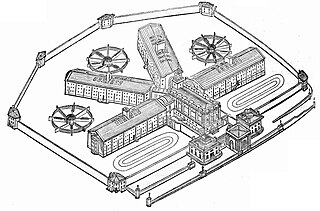This article has multiple issues. Please help improve it or discuss these issues on the talk page . (Learn how and when to remove these template messages)
|

Day trading is a form of speculation in securities in which a trader buys and sells a financial instrument within the same trading day, so that all positions are closed before the market closes for the trading day to avoid unmanageable risks and negative price gaps between one day's close and the next day's price at the open. Traders who trade in this capacity are generally classified as speculators. Day trading contrasts with the long-term trades underlying buy-and-hold and value investing strategies. [1] [2] Day trading may require fast trade execution, sometimes as fast as milli-seconds in scalping, therefore direct-access day trading software is often needed. [3]
Contents
- History
- Electronic communication networks
- Profitability and risks
- Techniques
- Swing Trading
- Trend following
- Contrarian investing
- Range trading
- Scalping
- Rebate trading
- Trading the news
- Price action trading
- Market-neutral trading
- Algorithmic trading
- Cost
- Commission
- Spread
- Market data
- See also
- References
Day trading is a strategy of buying and selling securities within the same trading day. According to FINRA, a "day trade" involves the purchase and sale (or sale and purchase) of the same security on the same day in a margin account, covering a range of securities including options. An individual is considered a "pattern day trader" if they execute four or more day trades within five business days, given these trades make up over six percent of their total trades in the margin account during that period. [4] Pattern day traders must adhere to specific margin requirements, notably maintaining a minimum equity of $25,000 in their trading account before engaging in day trading activities. [5]
Day traders generally use leverage such as margin loans. In the United States, Regulation T permits an initial maximum leverage of 2:1, but many brokers will permit 4:1 intraday leverage as long as the leverage is reduced to 2:1 or less by the end of the trading day. In other countries margin rates of 30:1 or higher are available. In the United States, based on rules by the Financial Industry Regulatory Authority, people who make more than 3 day trades per 5-trading-day period are termed pattern day traders and are required to maintain $25,000 in equity in their accounts. [6] However, a day trader with the legal minimum of $25,000 in their account can buy $100,000 (4× leverage) worth of stock during the day, as long as half of those positions are exited before the market close. Because of the high risk of margin use, and of other day trading practices, a day trader will often have to exit a losing position very quickly, in order to prevent a greater, unacceptable loss, or even a disastrous loss, much larger than their original investment, or even larger than their account value. [7] Since margin interest is typically only charged on overnight balances, the trader may pay no interest fees for the margin loan, though still running the risk of margin calls. Margin interest rates are usually based on the broker's call rate.
Some of the more commonly day-traded financial instruments are stocks, options, currency (including cryptocurrency), contracts for difference, and futures contracts such as stock market index futures, interest rate futures, currency futures and commodity futures. Some day traders use an intra-day technique known as scalping that has the trader holding a position briefly, for a few minutes to only seconds.
Day trading was once an activity that was exclusive to financial firms and professional speculators. Many day traders are bank or investment firm employees working as specialists in equity investment and investment management. Day trading gained popularity after the deregulation of commissions in the United States in 1975, the advent of electronic trading platforms in the 1990s, and with the stock price volatility during the dot-com bubble. [8] Recent 2020 pandemic lockdowns and following market volatility has caused a significant number of retail traders to enter the market. [9]
Day traders may be professionals that work for large financial institutions, are trained by other professionals or mentors, do not use their own capital, or receive a base salary of approximately $50,000 to $70,000 as well as the possibility for bonuses of 10%–30% of the profits realized. [10] Individuals can day trade with as little as $100, [11] or even less, with fractional shares.






